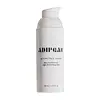What's inside
What's inside
 Key Ingredients
Key Ingredients

 Benefits
Benefits

 Concerns
Concerns

 Ingredients Side-by-side
Ingredients Side-by-side

Water
Skin ConditioningCaprylic/Capric Triglyceride
MaskingPropanediol
SolventGlycerin
HumectantEthylhexyl Palmitate
EmollientCetearyl Alcohol
EmollientSqualane
Emollient1,2-Hexanediol
Skin ConditioningSorbitan Olivate
EmulsifyingTocopheryl Acetate
AntioxidantParfum
MaskingCetearyl Olivate
Carbomer
Emulsion StabilisingArginine
MaskingEthylhexylglycerin
Skin ConditioningAdenosine
Skin ConditioningRosa Canina Fruit Oil
EmollientButylene Glycol
HumectantPolyglyceryl-10 Laurate
Skin ConditioningTocopherol
AntioxidantAcetyl Hexapeptide-8
HumectantCopper Tripeptide-1
Skin ConditioningHexapeptide-9
Skin ConditioningPalmitoyl Pentapeptide-4
Skin ConditioningTripeptide-1
Skin ConditioningWater, Caprylic/Capric Triglyceride, Propanediol, Glycerin, Ethylhexyl Palmitate, Cetearyl Alcohol, Squalane, 1,2-Hexanediol, Sorbitan Olivate, Tocopheryl Acetate, Parfum, Cetearyl Olivate, Carbomer, Arginine, Ethylhexylglycerin, Adenosine, Rosa Canina Fruit Oil, Butylene Glycol, Polyglyceryl-10 Laurate, Tocopherol, Acetyl Hexapeptide-8, Copper Tripeptide-1, Hexapeptide-9, Palmitoyl Pentapeptide-4, Tripeptide-1
Water
Skin ConditioningCarthamus Tinctorius Seed Oil
MaskingDicaprylyl Carbonate
EmollientGlycerin
HumectantBis-Diglyceryl Polyacyladipate-2
EmollientGlyceryl Oleate Citrate
EmulsifyingCetearyl Alcohol
EmollientKaempferia Parviflora Rhizome Extract
AntioxidantCucumis Sativus Fruit Extract
EmollientOryza Sativa Bran Wax
Skin ConditioningCarbomer
Emulsion StabilisingTocopheryl Acetate
AntioxidantXanthan Gum
EmulsifyingPentaerythrityl Tetra-Di-T-Butyl Hydroxyhydrocinnamate
AntioxidantHelianthus Annuus Seed Oil
EmollientPropanediol
SolventEthylhexylglycerin
Skin ConditioningOleic Acid
EmollientPolysorbate 20
EmulsifyingPropylene Glycol
HumectantSodium Benzoate
MaskingTocopherol
AntioxidantSodium Hydroxide
BufferingPentylene Glycol
Skin ConditioningPhenethyl Alcohol
MaskingWater, Carthamus Tinctorius Seed Oil, Dicaprylyl Carbonate, Glycerin, Bis-Diglyceryl Polyacyladipate-2, Glyceryl Oleate Citrate, Cetearyl Alcohol, Kaempferia Parviflora Rhizome Extract, Cucumis Sativus Fruit Extract, Oryza Sativa Bran Wax, Carbomer, Tocopheryl Acetate, Xanthan Gum, Pentaerythrityl Tetra-Di-T-Butyl Hydroxyhydrocinnamate, Helianthus Annuus Seed Oil, Propanediol, Ethylhexylglycerin, Oleic Acid, Polysorbate 20, Propylene Glycol, Sodium Benzoate, Tocopherol, Sodium Hydroxide, Pentylene Glycol, Phenethyl Alcohol
 Reviews
Reviews

Ingredients Explained
These ingredients are found in both products.
Ingredients higher up in an ingredient list are typically present in a larger amount.
Carbomer is a polymer of acrylic acid. Its main role is to create a gel consistency.
A high amount of carbomer can cause pilling or balling up of products. Don't worry, most products contain 1% or less of carbomer.
Cetearyl alcohol is a mixture of two fatty alcohols: cetyl alcohol and stearyl alcohol. It is mainly used as an emulsifier. Emulsifiers help prevent the separation of oils and products. Due to its composition, it can also be used to thicken a product or help create foam.
Cetearyl alcohol is an emollient. Emollients help soothe and hydrate the skin by trapping moisture.
Studies show Cetearyl alcohol is non-toxic and non-irritating. The FDA allows products labeled "alcohol-free" to have fatty alcohols.
This ingredient is usually derived from plant oils such as palm, vegetable, or coconut oils. There is debate on whether this ingredient will cause acne.
Due to the fatty acid base, this ingredient may not be Malassezia folliculitis safe.
Learn more about Cetearyl AlcoholEthylhexylglycerin (we can't pronounce this either) is commonly used as a preservative and skin softener. It is derived from glyceryl.
You might see Ethylhexylglycerin often paired with other preservatives such as phenoxyethanol. Ethylhexylglycerin has been found to increase the effectiveness of these other preservatives.
Glycerin is already naturally found in your skin. It helps moisturize and protect your skin.
A study from 2016 found glycerin to be more effective as a humectant than AHAs and hyaluronic acid.
As a humectant, it helps the skin stay hydrated by pulling moisture to your skin. The low molecular weight of glycerin allows it to pull moisture into the deeper layers of your skin.
Hydrated skin improves your skin barrier; Your skin barrier helps protect against irritants and bacteria.
Glycerin has also been found to have antimicrobial and antiviral properties. Due to these properties, glycerin is often used in wound and burn treatments.
In cosmetics, glycerin is usually derived from plants such as soybean or palm. However, it can also be sourced from animals, such as tallow or animal fat.
This ingredient is organic, colorless, odorless, and non-toxic.
Glycerin is the name for this ingredient in American English. British English uses Glycerol/Glycerine.
Learn more about GlycerinPropanediol is an all-star ingredient. It softens, hydrates, and smooths the skin.
It’s often used to:
Propanediol is not likely to cause sensitivity and considered safe to use. It is derived from corn or petroleum with a clear color and no scent.
Learn more about PropanediolTocopherol (also known as Vitamin E) is a common antioxidant used to help protect the skin from free-radicals and strengthen the skin barrier. It's also fat soluble - this means our skin is great at absorbing it.
Vitamin E also helps keep your natural skin lipids healthy. Your lipid skin barrier naturally consists of lipids, ceramides, and fatty acids. Vitamin E offers extra protection for your skin’s lipid barrier, keeping your skin healthy and nourished.
Another benefit is a bit of UV protection. Vitamin E helps reduce the damage caused by UVB rays. (It should not replace your sunscreen). Combining it with Vitamin C can decrease sunburned cells and hyperpigmentation after UV exposure.
You might have noticed Vitamin E + C often paired together. This is because it is great at stabilizing Vitamin C. Using the two together helps increase the effectiveness of both ingredients.
There are often claims that Vitamin E can reduce/prevent scarring, but these claims haven't been confirmed by scientific research.
Learn more about TocopherolTocopheryl Acetate is AKA Vitamin E. It is an antioxidant and protects your skin from free radicals. Free radicals damage the skin by breaking down collagen.
One study found using Tocopheryl Acetate with Vitamin C decreased the number of sunburned cells.
Tocopheryl Acetate is commonly found in both skincare and dietary supplements.
Learn more about Tocopheryl AcetateWater. It's the most common cosmetic ingredient of all. You'll usually see it at the top of ingredient lists, meaning that it makes up the largest part of the product.
So why is it so popular? Water most often acts as a solvent - this means that it helps dissolve other ingredients into the formulation.
You'll also recognize water as that liquid we all need to stay alive. If you see this, drink a glass of water. Stay hydrated!
Learn more about Water